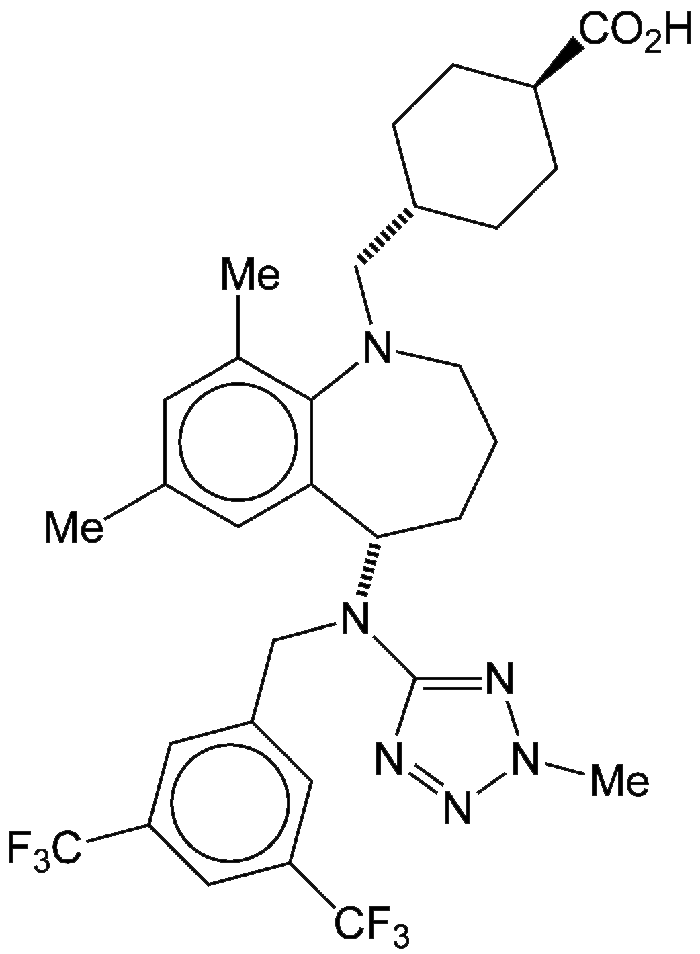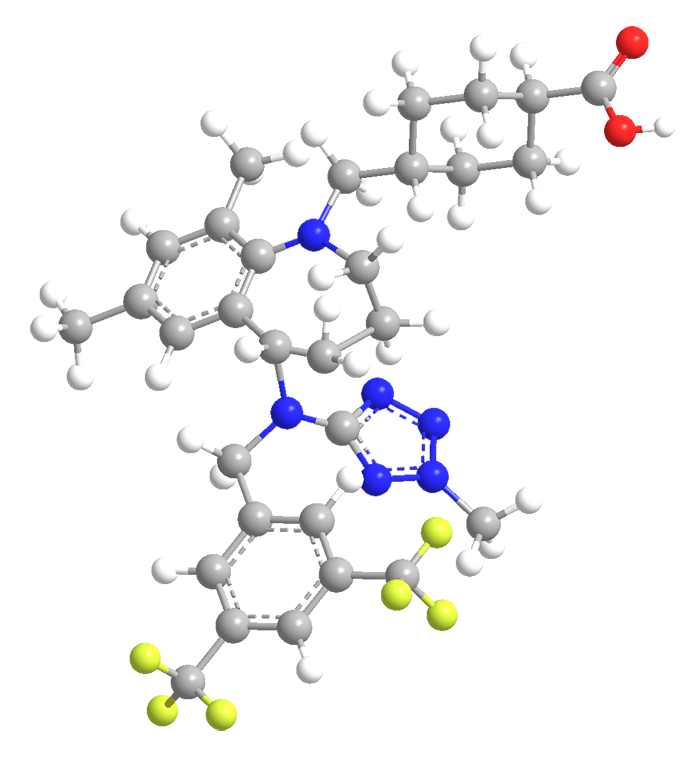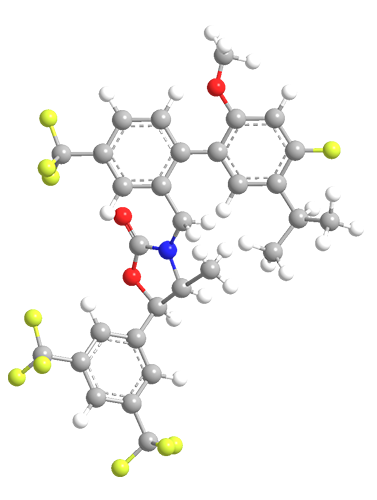



The “trapib” family of drugs are cholesterylester transfer protein (CETP) inhibitors that increase high-density lipoproteins (HDLs) and decrease low-density lipoproteins (LDLs) in the body. The molecules typically contain aromatic rings, nitrogen heterocycles, and multiple trifluoromethyl groups.
The first CETP inhibitor, torcetrapib, was developed by Pfizer and was discontinued because of adverse cardiac side effects. Two more recent ones, anacetrapib (Merck) and evacetrapib (Lilly), showed more promise, but they too are having tough sledding.
Anacetrapib has been in Phase II and III trials for more than a decade. Of some concern is that it remains in patients’ bodies for as long as 4 years. In 2013, however, Merck launched a 30,000-participant, double-blind, placebo-controlled Phase III study of anacetrapib that will continue through 2017.
Lilly, on the other hand, has pulled the plug on evacetrapib. It did so in late 2015 after a 12,000-participant study showed that the drug did not reduce cardiovascular events compared with the placebo. The failure caused Lilly to take a $90 million charge against its fourth-quarter earnings.

Learn more about this molecule from CAS, the most authoritative and comprehensive source for chemical information.
Molecule of the Week needs your suggestions!
If your favorite molecule is not in our archive, please send us a message. The molecule can be notable for its current or historical importance or for any quirky reason. Thank you!
Stay Ahead of the Chemistry Curve
Learn how ACS can help you stay ahead in the world of chemistry.

